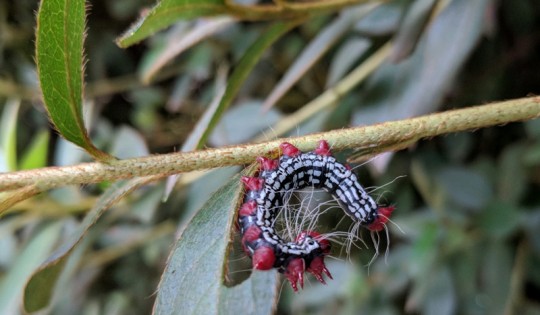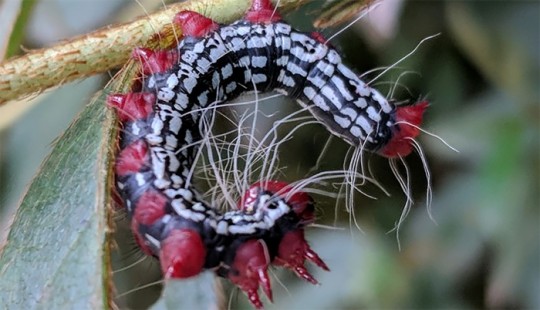Weekend Gardening: Caterpillars Can Devour Your Azaleas
July 21, 2018
by Beth Bolles, Escambia County Extension, for NorthEscambia.com
Azalea caterpillars have made their presence known this summer and are devouring the foliage of one of our favorite evergreen plants.
The brown moths will lay large numbers of eggs on azaleas throughout the spring and then young emerging caterpillars feed in groups, eating entire leaves. As the caterpillars grow in size, they become more brightly colored with yellow bodies and black stripes. They also have bright red legs and a head. If you touch a mature caterpillar, it will often raise it’s head and ‘tail’ in response. These are not stinging caterpillars so that is only a defensive response.
The feeding damage of the caterpillars results in a very unattractive azalea. Some leaves with damage will also turn brown making the damage more noticeable. The good news is that even through plants look terrible, a relatively heathy azalea will grow new leaves during the season.
If you do have an infestation of azalea caterpillars, you may want to consider a treatment. Remember that it is easier to manage young caterpillar so if you have caterpillars that are already two inches in length, your chemical treatment may not be as successful.
One option for management is to physically remove the caterpillars if you only have a small number on your plants. If you choose to use an insecticide, choose an organic product like B.t (Bacillus thuringiensis) or spinosad. These are safe for many beneficial insects that are also helping in the management of the caterpillars. Both products will be available at our local nurseries.
Pictured: An azalea caterpillar on a bush in Bratt. NorthEscambia.com photos, click to enlarge.





Comments